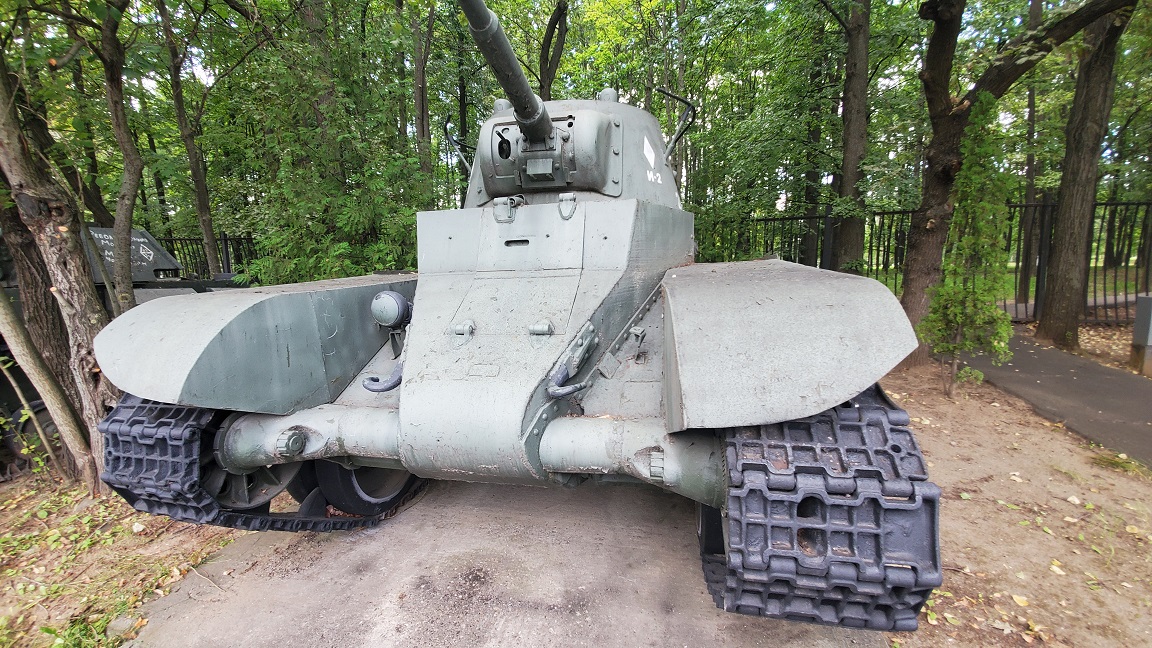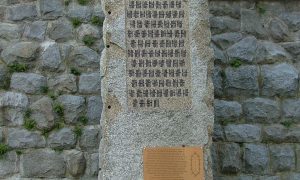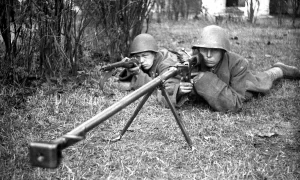BT Tank (Fast Tank) is the name of a series of Soviet light wheeled-tracked tanks of the 1930s.
Along with the T-26, they formed the basis of the Soviet tank fleet before the Great Patriotic War and in its initial period. Involved in conflicts with Japan (including fighting at Lake Khasan and on Khalkhin Gol), in the Civil War in Spain, in the Soviet-Finnish War, and in the Soviet-Japanese War.
In the Red Army they had the nicknames “betashka” or “betushka”. The BT-7 tanks with conical turrets were nicknamed “Mickey Mouse” in the German army for the characteristic shape of the tank’s round hatches, which, when open, resembled the ears of a cartoon mouse and the “high-speed samovar” for its speed.
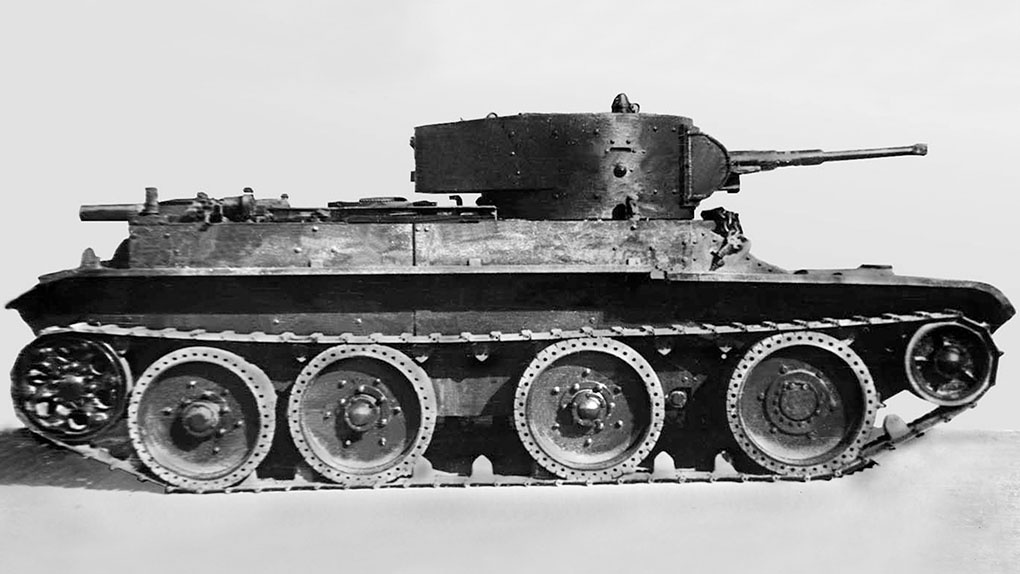
Predecessors
The BT owes its origin to the American designer J.W. Christie, who proposed an original concept of high-speed tanks.
The topic of wheeled-tracked combat vehicles in the late 1920s – early 1930s was very relevant, since the tanks of that era were notable for their slowness. The speed of the first tanks did not exceed 10 km/h, this speed was considered sufficient to accompany the infantry and break through the enemy’s defensive zone, but the transfer of tanks to other sectors of the front was very problematic: in addition to low speed, the tanks were distinguished by extremely unreliable tracks, their service often did not exceed 100 km.
The low speed and unreliability of the tracks were associated with the widespread use of armored vehicles in the interwar period. The military desperately needed a combat vehicle with high speed. Despite the presence of numerous shortcomings in armored vehicles, only they could occupy the niche of high-speed combat vehicles.
To increase the mobility of the tanks, heavy trucks were used to transport the tanks to the battlefield, but this method required additional costs.
Austro-Hungarian officer Lieutenant Gunther Burshtynu was one of the first who came up with the idea to equip an armored vehicle with both wheeled and tracked propulsion; he put forward this project in 1911. Such a hybrid tank could move on wheels on a good road, like a car (at an appropriate speed), and when driving off-road, the wheels rose and the tank went on tracks. Burshtyn’s idea remained unrealized, but was not forgotten.
Designers from many countries tried to find the most successful solution to the “wheeled-tracked problem”, but the vehicles created basically remained only bold experiments: the development of technology did not stand still, and purely tracked tanks gradually got rid of “teething diseases”. The speed of the light tanks on the highway reached 40-50 km/h, the service life of the tracks increased, and the wheel-tracked hybrids were difficult and unreliable.
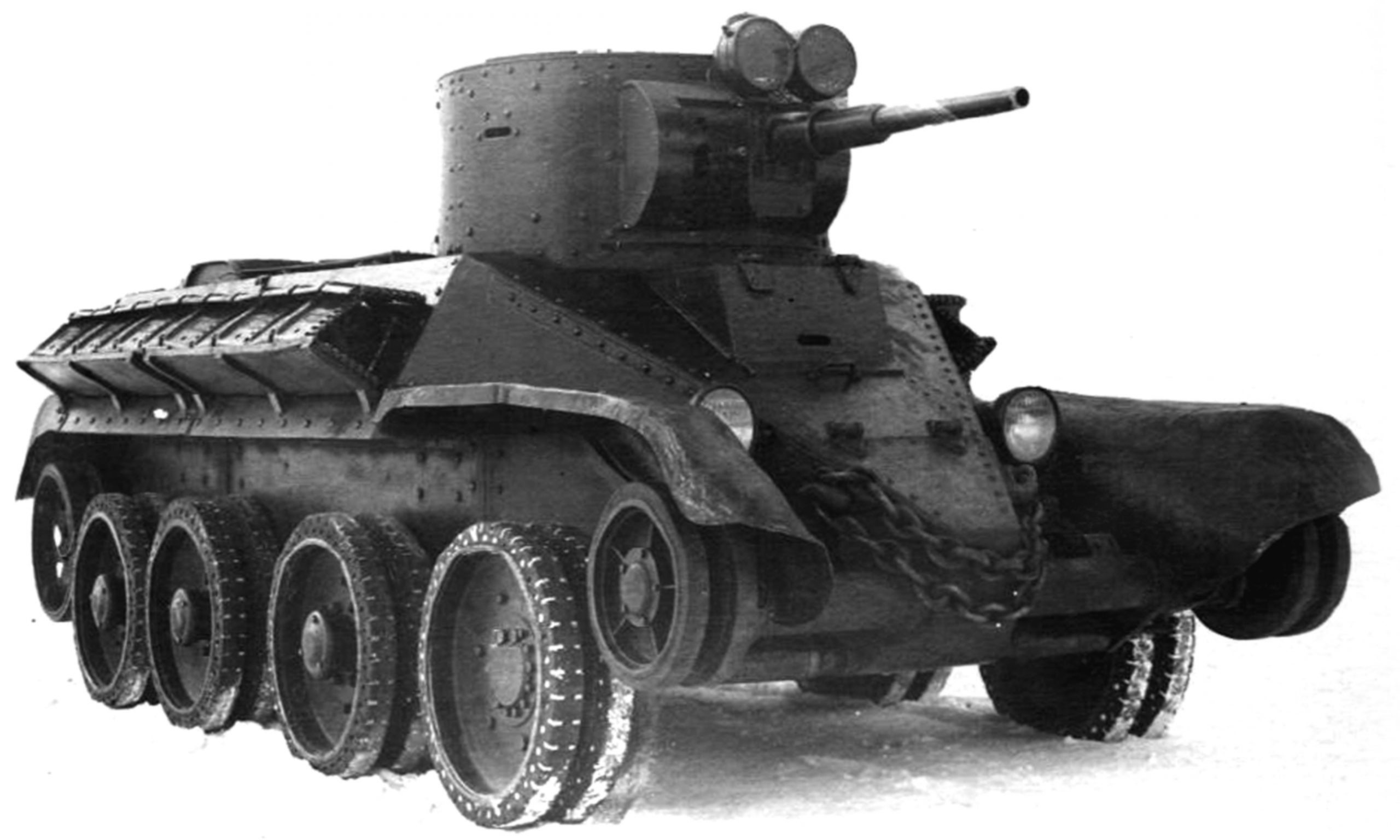
Birth of BT Tank
A revolutionary solution was found by the American designer Walter Christie: he proposed increasing the diameter of the road wheels to the size of car wheels, installing the drive on the rear rollers, and making the two front rollers steerable. The tank with the tracks removed turned into a normal wheeled vehicle with a 2 × 8 wheel arrangement, such a scheme did not require lifting and lowering mechanisms for the propellers: the crew simply removed the tracks and fixed them on the fenders. To increase the power-to-weight ratio, an aircraft engine was installed on the tank – with a mass of 9 tons, a 1931 model car could accelerate to 110 km/h and more. Such indicators attracted attention to the new product, but the US Army rejected Christie’s tanks, considering it unreliable.
In the USSR, Christie’s projects were met with attention, at this time in the early 1930s in the USSR there was a feverish search for a successful tank concept. Attempts to create a tank on their own were unsuccessful – Soviet tank builders did not have sufficient experience in creating combat vehicles: the creation of the T-24 tank ended in failure, and the MS-1 tank was more of a prototype. As a result, the Soviet government made attempts to purchase equipment and technology abroad.
On December 5, 1929, on the basis of the report of the Chairman of the Revolutionary Military Council K. E. Voroshilov, the commission under the leadership of the Deputy Chairman of the Council of People’s Commissars GK Ordzhonikidze decides to send representatives of the military department and industry abroad to acquire weapons and receive technical assistance for their production.
On December 30, 1929, a commission headed by IA Khalepsky, head of the Red Army Mechanization and Motorization Directorate, was sent to Germany, Czechoslovakia, France, England and the USA.
In France, tank building developed very slowly: the basis of the tank fleet was the Renault FT-17, which distinguished itself during the First World War, and vehicles based on it. In Germany, there was no tank building – the country was forbidden to have and develop tanks under the terms of surrender. In England there was a successful tank ” Vickers – 6 tons “, which did not fall into service with the British army, but was willingly sold abroad. The Soviet side purchased a production license, and the Soviet T-26 tank became the development of Vickers.
Nevertheless, Christie’s project was of the greatest interest to the Soviet military. His high-speed tank M.1940 was suitable for the vast expanses of the USSR, the ability to quickly transfer tank units over long distances seemed tempting for the Red Army.
On April 28, 1930, an agreement was signed for the purchase of M.1940 tanks between the US Wheel Track Layer Corporation and the Amtorg Trading Corporation, which represents the interests of the USSR in the United States. The USSR paid $60,000 for “two military tanks, $4,000 for “spare parts for purchased tanks” and $100,000 personally to designer Christie – for the sale of production rights, the transfer of patents and technical assistance services.
Returning from the United States, in June 1930, I. A. Khalepsky presented his report to the Revolutionary Military Council, which, in particular, says:
Taking into account that the Christie tank closes all tanks in the world in its speed, that the Poles are going to build it, we can find ourselves in a very disadvantageous position in terms of the tactical use of tank units. In this regard, I urge you to speed up the organization of production of the Christie tank by preserving the production of the Liberty engine at aircraft factories and preparing the production of other units at the Yaroslavl Automobile Plant.
According to the contract, Christie was obliged to deliver both cars by September 1930, but assembly and testing dragged on until December 24. The tanks arrived in the USSR without towers and weapons, and the set of documentation was incomplete, for which $ 25,000 was withheld from Christie. This was the reason for his refusal to come to the USSR. In the spring of 1931, numerous delegations of the leadership of the Red Army at the training ground near Voronezh got acquainted with the copies of “Original-1” and “Original-2”. The military liked the dynamic characteristics of the tank very much: the tank was distinguished by a very high speed for that time and a large power reserve, the tank stood out favorably against the background of the slow-moving MS-1 and T-26.
Tank testing commenced on the proving ground in Kubinka
According to the results of the demonstration to the senior and senior command personnel of the Red Army on March 14 – May 16, 1931, the Test Department of the Department of Mechanization and Motorization of the Red Army concluded that the BT (“Christie”) tank “is of the exceptional interest of a machine with a universal propulsion system, requires more development and the introduction of a number of constructive improvements and changes ”.
On May 17, 1931, the USSR drew up a plan for implementing government decisions on organizing the production of the BT (“Christie”) tank at the Kharkov Comintern Steam Locomotive Plant.
The final decision on the production of the BT-Christie tank at the KhPZ was made in the protocol of the KO “On Tank Building” dated May 23, 1931, which specifically stipulated: fast fighter (BT).”
In 1931, the Christie tank with new BT-2 turrets (“Fast Tank – 2”) was put into service and put into mass production. The first three Soviet BT-2s were first shown to the public at a parade in Moscow on November 7, 1931. One of them caught fire and was unable to walk across Red Square.
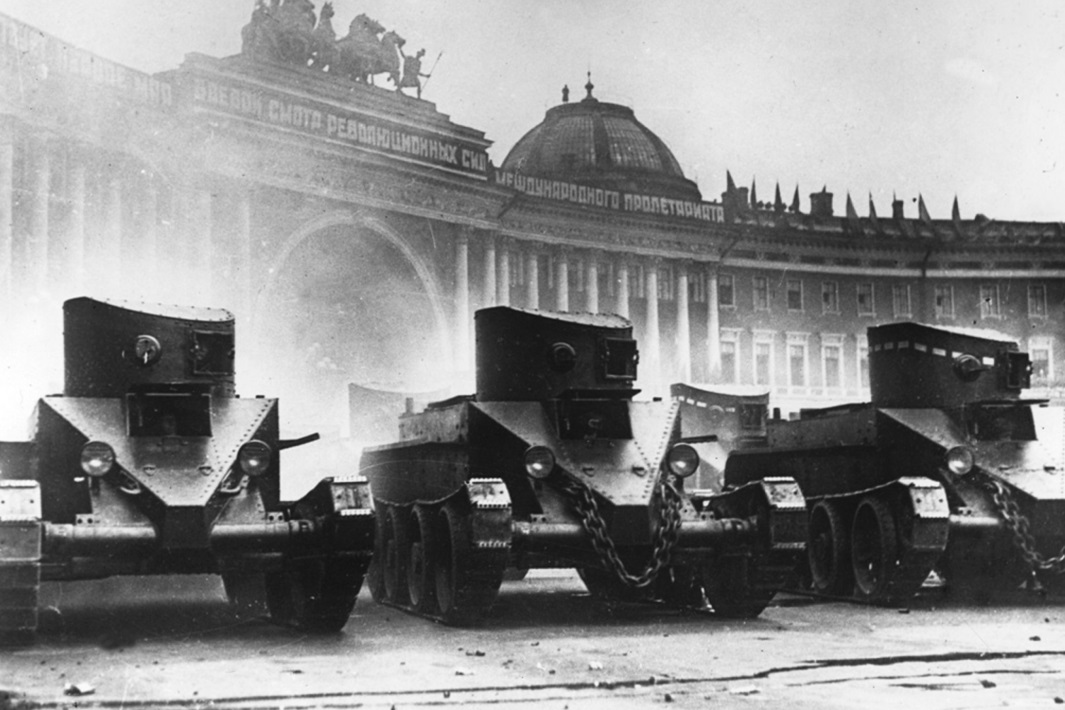
BT Tank Application and evaluation
BT went a glorious military path, taking part in all conflicts and wars in which the USSR took part from the early 1930s to 1945. BTs also fought in Spain, where they showed complete superiority over German and Italian tanks (more precisely, machine-gun tankettes ). They proved to be excellent in clashes with the Japanese, demonstrating excellent qualities for delivering deep and sweeping blows (in accordance with the Soviet theory of deep operation ).
45-mm cannons were guaranteed to penetrate any armored vehicles of that time. The BT armor reliably protected from bullets and shrapnel, but in a collision with troops saturated with anti-tank equipment (as, for example, in Finland), problems began. Not only did the BTs not withstand the hit of armor-piercing shells, the vehicles were also flammable due to the gas tanks installed along the sides of the BT in order to increase the range. When a shell hit the side, a fire was almost inevitable.
Nevertheless, the tank proved its high combat qualities, and the death of the vehicle from anti-tank gunnery fire was considered an inevitable evil at that time.
BT was appreciated by the British. After visiting the Kiev maneuvers of 1936, in which hundreds of BT tanks took part, the British military department acquired one tank of his design from Christie. On its basis, the A13 tank was created, which (in various versions) became the basis of the British tank forces. The development of the A13 was the famous British Cromwell and Crusader tanks.
BTs were actively used at the beginning of the Great Patriotic War. In terms of their fighting qualities, they were utterly superior to the German light tanks Pz-I and Pz-II. When compared with Pz-III, Pz-IV, 38 (t) and 35 (t)it can be seen that BTs surpass them in power characteristics. A. B. Shirokorad in his book “Tank War on the Eastern Front” notes, however, that the Pz-III at the 1939 training ground turned out to be an unpleasant surprise for Soviet engineers and military personnel. A German tank with a lower specific power developed a speed equivalent to that of a BT; and its reinforced armor proved to be a tough nut to crack for “soft” Soviet shells.
BT tanks in terms of firepower were comparable to the Pz-III (37- or 50-mm gun), while the Pz-IV was not intended to fight armored vehicles at all (until 1942, these tanks were armed with a short-barreled 75-mm gun). But at a distance of actual fire, both BT and German tanks could destroy each other – the armor on all was thin. And here the “visibility” worked against BT, which was generally characteristic of Soviet tanks of that time.The absence of a commander’s cupola did not allow the commander to observe the battlefield. The fact that the commander combined the functions of a gunner also did not increase the tank’s combat effectiveness. Contrary to the opinion imposed by the literature, the BT tanks were quite heavily armed. The 45 mm tank gun appeared as a result of a deep alteration of the 37 mm anti-tank gun purchased from Rheinmetall in 1930, which was in service with the Wehrmacht at the time of June 22, 1941. The result of the alteration was a heavy high-explosive fragmentation projectile, which the prototype could not boast of, and a slight increase in armor penetration. Poor optics did not allow full use of the capabilities of the artillery system. Ivan Vasilyevich Boldin recalls in his memoirs how three BT tanks, with ammunition, but no fuel, watched a convoy of German tanks and inflicted significant losses on it. Thus, BT tanks, with proper use, were still quite effective weapons at that time.
Apparently, the reasons for the mass destruction of BT at the beginning of the war should be sought not in the design flaws of the vehicle, but in the general course of hostilities. Defective BTs were abandoned when retreating, the damaged vehicles could not be restored, tank units did not receive ammunition and fuel and lubricants. In such circumstances, not only BT, but also T-34 and KV were killed en masse. During the heavy battles of 1941 – early 1942, BTs were almost completely destroyed. By mid-1942, there is no longer any mention of them.
The abandoned and damaged BTs were willingly restored by the enemy. The Finns also produced a small series of 114mm self – propelled guns on the BT-7 (BT-42) chassis.
The last time BT went into battle was during the Soviet-Japanese War in 1945. A certain number of these tanks remained in the Far East by that time, and they proved to be effective in defeating the Kwantung army.
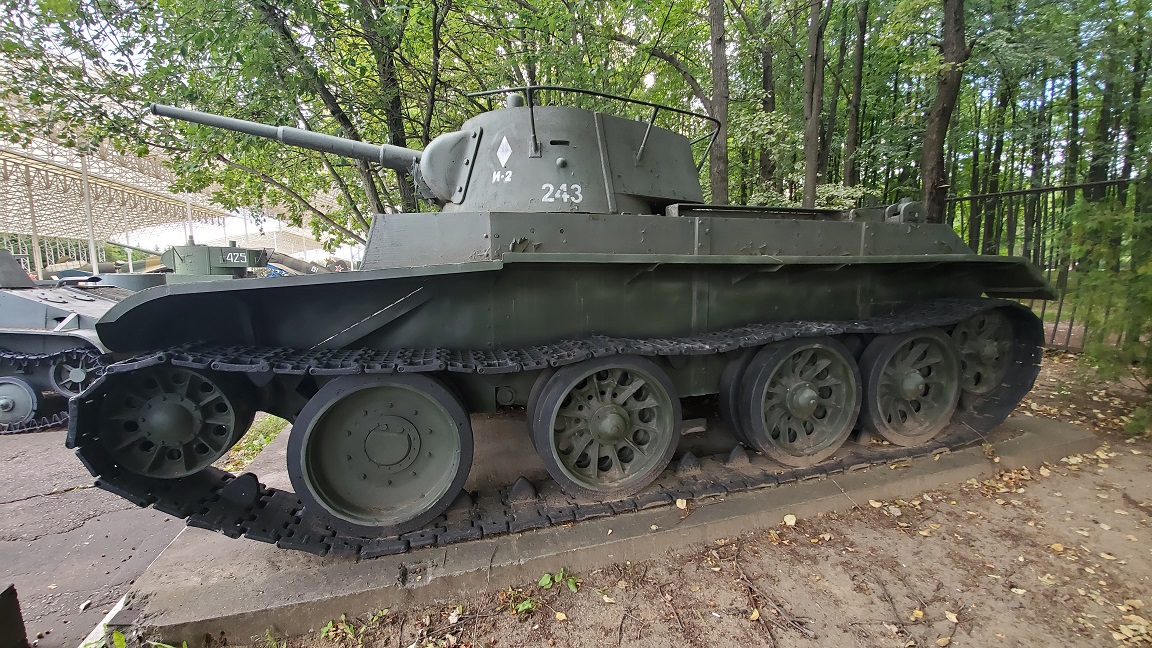
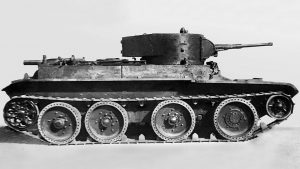
Varieties of BT Tank
- BT-2 : The first version of the BT is, in fact, a trial batch. Produced in 1931-32. Armed with a 37 mm cannon and a DT machine gun. Crew – 2 people.
- BT-4 modification of the BT-2 tank, developed in the Kharkov design bureau under the leadership of engineer A.O. Firsov
- BT-5 : Enhanced armor and armament (45 mm cannon and DT machine gun; some tanks had a second DT in the turret niche, some also had anti-aircraft DT). Crew – 3 people. They were produced as a linear tank and a commander’s tank (with a walkie-talkie).
- BT-5PH : Underwater tank – it was distinguished by devices that allowed it to overcome water obstacles along the bottom. Experimental.
- PT-1A : Amphibious tank. Experimental.
- BT-5A : Artillery support tank with a 76mm cannon in an enlarged turret. Experimental.
- BT-7 : A slightly modified welded hull. New engine -M-17 (licensed BMW -VI). Armament – like the BT-5. It was produced, like the BT-5, in a version with a walkie-talkie and without a walkie-talkie.
- BT-7A : Artillery support tank with a 76mm cannon in an enlarged turret.
- OT-7 : Flamethrower tank.
- BT-7M (pre-production vehicles were called BT-8): Diesel engine V-2. The purpose of installing a diesel engine on the tank was to increase fuel efficiency, power reserve and reduce fire hazard during operation and combat damage.
- BT-9 : A light, high-speed wheeled-tracked tank, a prototype of the A-20. The project was rejected in the fall of 1937.
In addition, a large number of experimental BT-based tanks (missile-carrying, shielded, radio-controlled, etc.) were tested. Also, on the basis of BT created experimental and small-scale armored vehicles (engineering vehicles, vehicle launched bridges, machine control, ARV, and so on. D.).
Some sources claim that there was a variant of the tank with two turrets (like the first T-26 ), However, this is not true. There were no two-tower BTs either in the models or in the projects.


